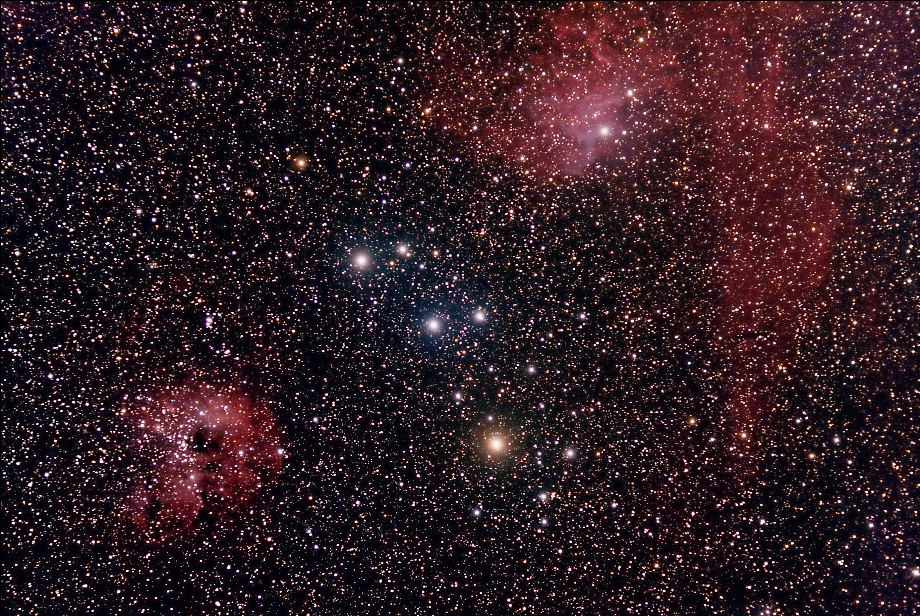 |
The Southern Auriga Region
 |
Copyright 2005 Hap Griffin
This region in the southern part of the constellation of Auriga holds several celestial gems. In the lower left is the open star cluster NGC 1893 with associated wreath-shaped emission nebula IC 410. It is similar in appearance to the Rosette Nebula shown in detail here. The mechanism of these two objects' origins are likely similar. At the upper right is the Flaming Star Nebula, IC 405. The nebula surrounds and is illuminated by the star AE Aurigae giving one the impression that the star is "burning". The differences in star colors are evident in the bright stars near the center of the image, the blue stars being generally hotter than the cooler orange stars. The apparent proximity of this group of stars is illusionary...the brighter of the two orange stars at 234 light years is ten times closer than the fainter one at a distance of 2363 light years. Likewise the two blue stars in the middle are relatively close together at distances of 397 and 448 light years, but the two bright stars above them are at distances of 235 and 3077 light years, with the brighter one actually being farther away.
Registar reports 30,490 stars in this image.
Date/Location:
January 9, 2005 Griffin/Hunter
Observatory Bethune, SC
Instrument: Canon 300D Digital SLR (modified) through Orion ED80 w/ Meade
.63 Focal Reducer piggybacked on LX-200
Focal Ratio: Approx. f4.5
Guiding: Auto through LX-200 w/ SBIG ST-237
Conditions: Visually clear, still
Weather: 40 deg. F
Exposure: 80 minutes total @ ISO 800 (16 x 5 min exposures) calibrated with flat frame
and Master Dark frame (median combine of 9 darks)
Filters: Baader UV/IR Block
Processing: Focused and captured with DSLRFocus.
RAW to TIFF conversion, frame calibrations, Digital Development,
Adaptive Richardson-Lucy deconvolution, scaling and JPEG conversion with ImagesPlus.
Frame alignment with Registar. Noise reduction with
NeatImage.